Exploring The Enchanting Silent City: Best Things To Do In Mdina Malta

Plan Your Visit To Mdina Malta
Once the capital city of Malta, ancient Mdina is the oldest city on this tiny island. Exploring the enchanting silent city was at the top of our bucket list when we planned our visit to the island of Malta. And we weren’t disappointed! In this blog we will share with you the best things to do in Mdina, Malta.
Highlights of Mdina
✅ Visit the oldest city in all of Malta and one of the best preserved medieval cities in Europe
✅ Admire the most beautiful Baroque architecture in the country including St. Paul’s Cathedral and Church of the Annunciation of our Lady
✅ Discover the iconic balconies, doors and door handles that are unique to Mdina
✅ Walk through the main gate that was featured in Game of Thrones
CHECK OUT OUR TOP TRAVEL RESOURCES
✦ Find superior accommodations on Expedia.com or Booking.com
✦ Book your rental car wth Discover Cars
Pass Through The Magnificent Mdina Gate
Making a first impression is important and tends to go a long way in framing your experience and opinion of something. In the case of the fortified city of Mdina, the impressive Baroque-style gate built into the city’s main bastion is the perfect introduction to this amazing ancient fortress.
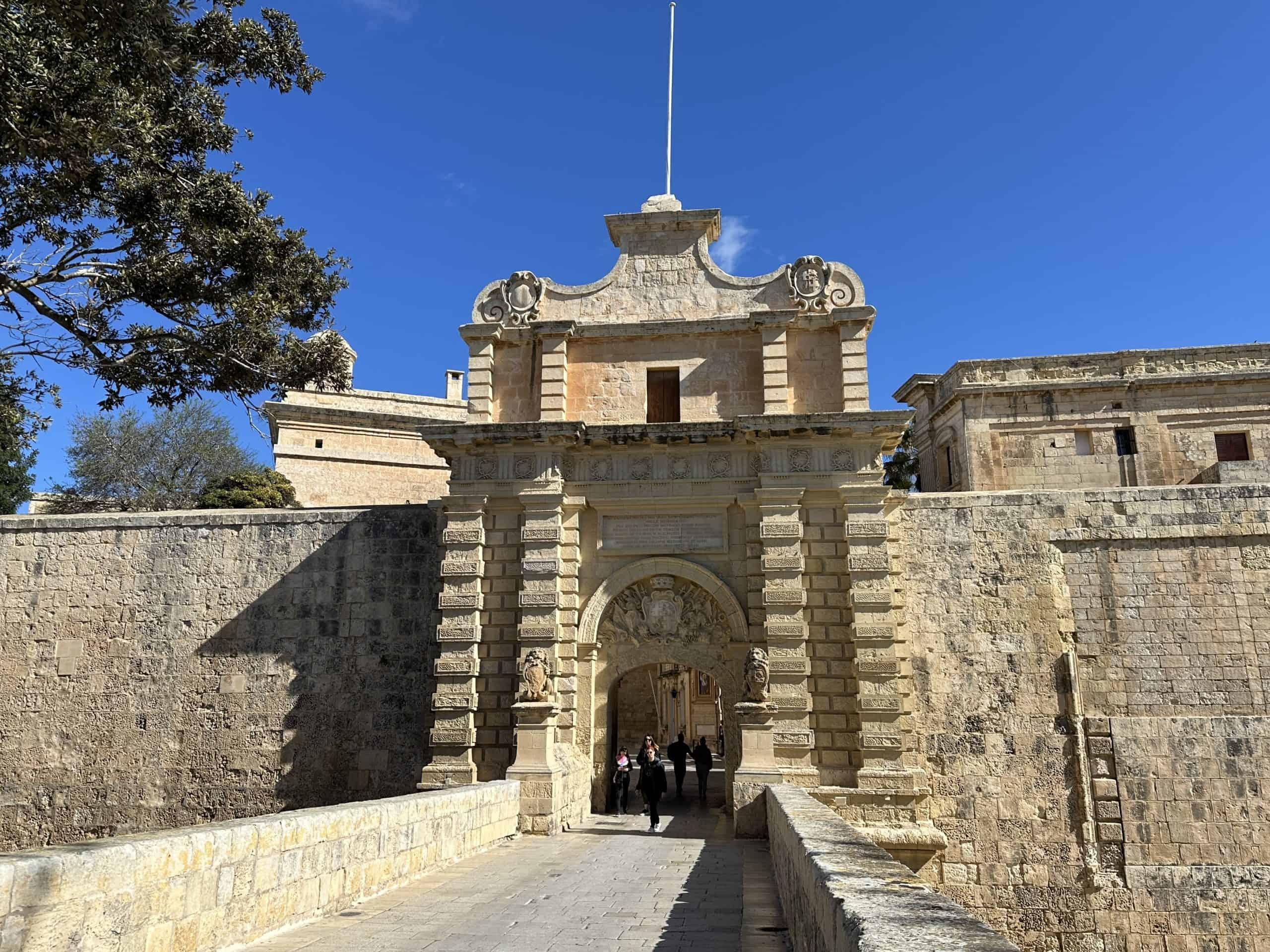
Walking towards the walled city, the Mdina Gate, or Vilhena Gate, is the main feature on the outer fortified wall. The gate was built in 1724 when António Manoel de Vilhena was Grand Master of the city. It was designed by Charles François de Mondion, who was an architect and military engineer of the Order of the Knights of St. John.
Before the Vihena Gate was built, the entrance to the city was through a smaller, less elegant gate that stood a few dozen metres from the existing structure. We spent several minutes taking in the wonderful Baroque entrance to the city before making our way across its welcoming bridge.
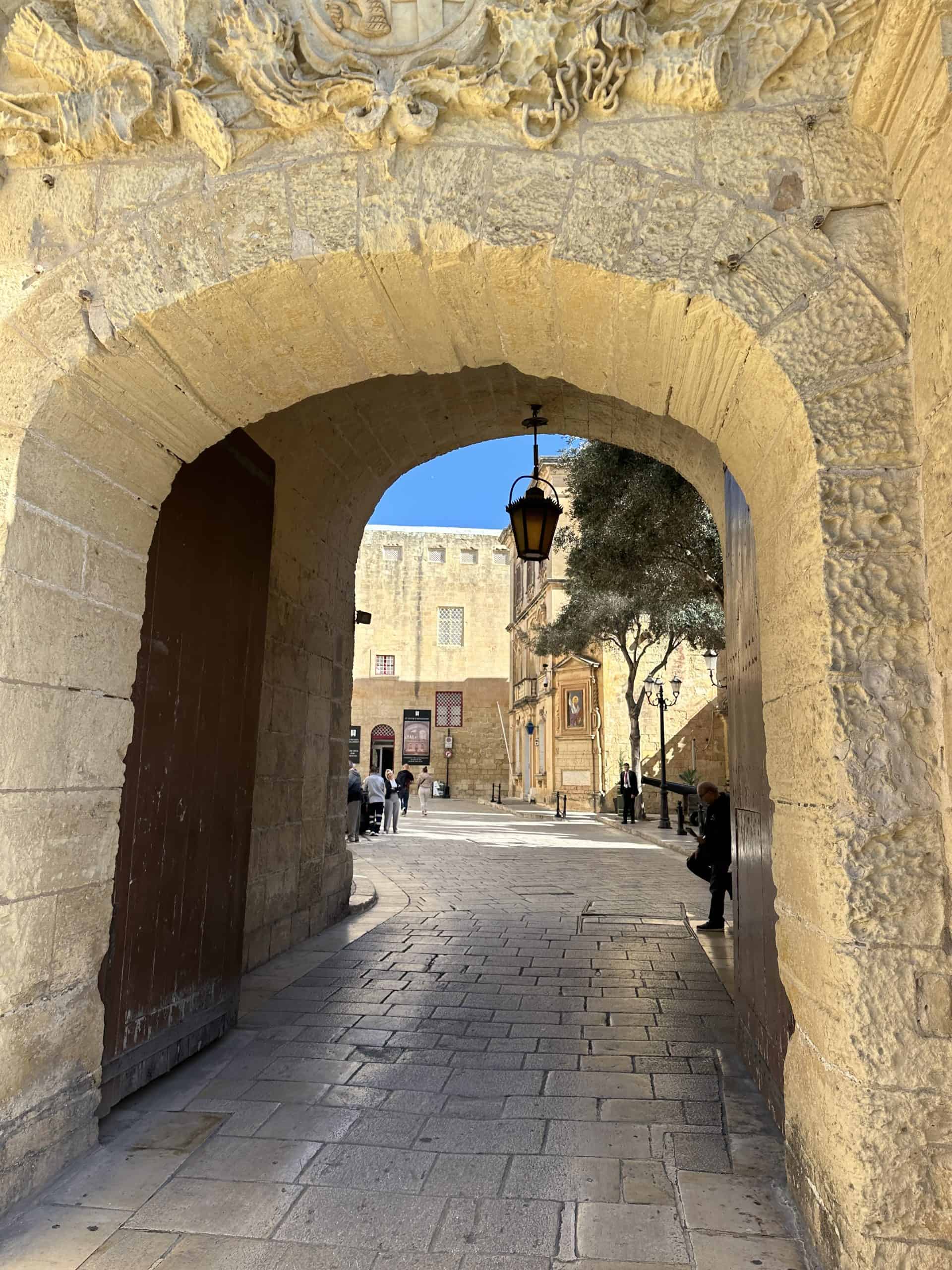
The approach to the gate is over a stone block bridge that allows passage over the grassy moat below. The moat itself has been turned into a serene green garden that makes for a relaxing stroll.
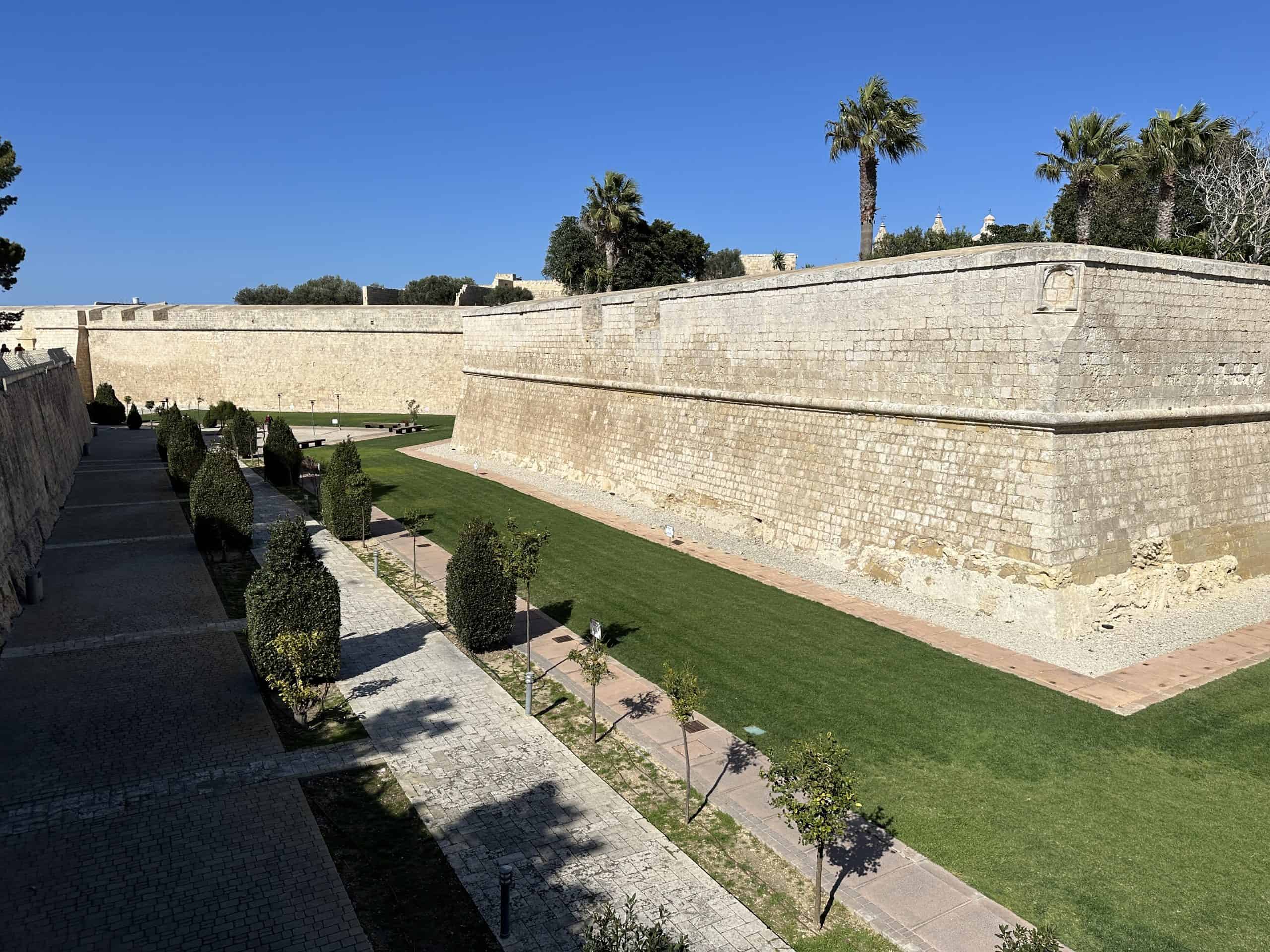
Before walking across the bridge, we suggest stopping for a minute to admire the ornate arch of the gate that is flanked by a pair of regal stone lions – symbols of power and royalty – protecting the entrance. Looking towards the top of the arch is the intricately detailed Coat of Arms carved into the stone.
If you are a Game of Thrones fan, there may be a familiarity to the entrance of the city as parts of Season 1, Episode 3 were filmed here.
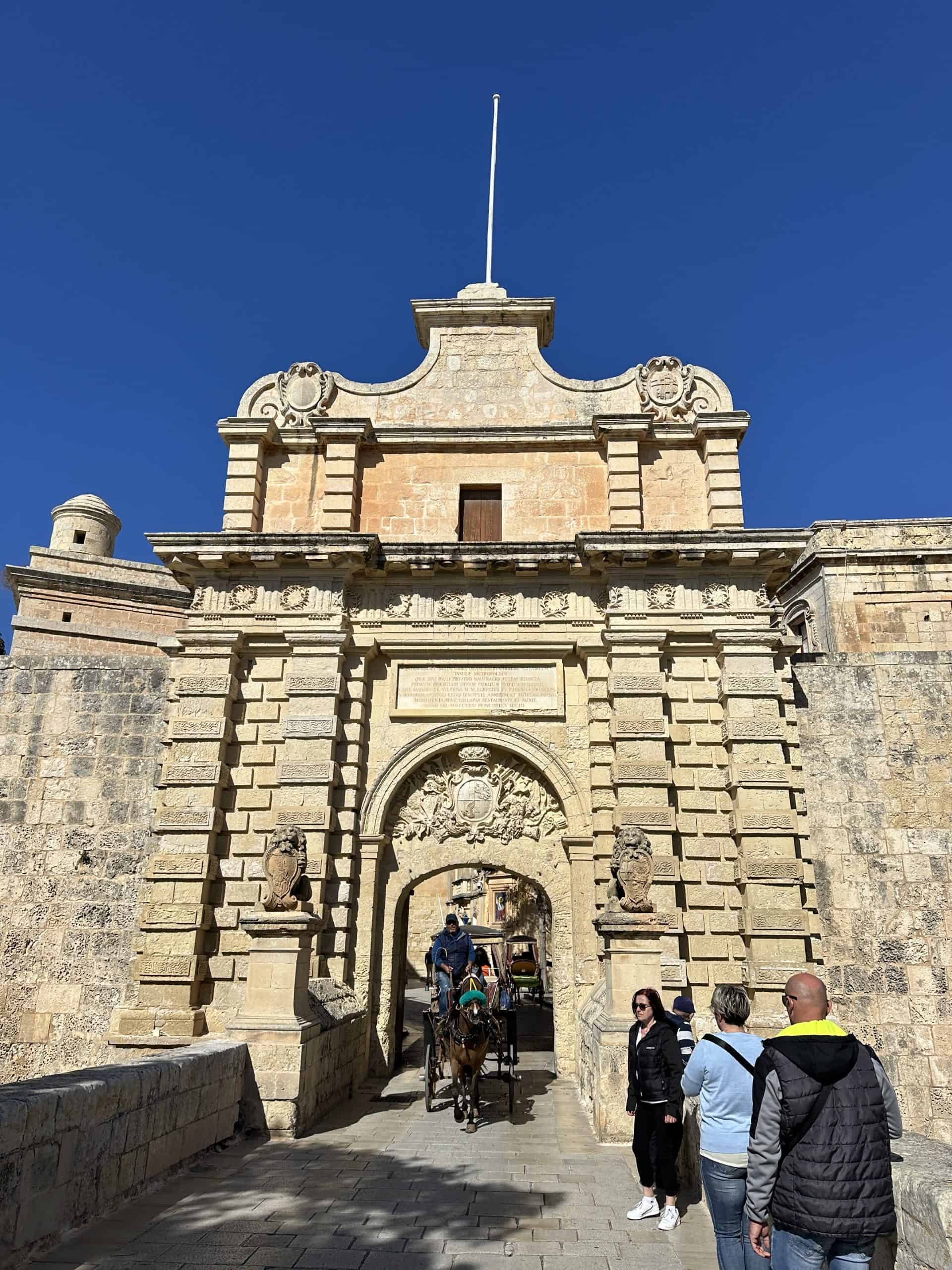
Once you walk through the gate, be sure to turn back and look above the arched doorway. There, carved in stone, are the 3 patron saints of Mdina – St. Paul, St. Publius and St. Agatha.

✅ To make the most of your time in Mdina it’s best to book a walking tour with a knowledgeable guide. We took this tour and it was a perfect blend of history, background and interesting facts about this amazing city.
Explore The Vilhena Palace – National Museum Of Natural History
Once you enter through the main gate, you will find yourself next to the Palazzo Vilhenna, which is now the Vilhena Palace National Museum of Natural History.
The Palazzo Vilhena is another Baroque architectural design by Charles François de Mondion and commissioned by Grand Master Vilhenna in 1725. It is one of the most unique and distinguished Baroque-style buildings in all of Malta.

The Palace was once used for Mdina’s law courts. It was also used as a sanatorium and hospital following the cholera outbreak of 1837 and continued to be used as a hospital until the early 20th century.
The palace, like much of Malta, suffered damage during the bombings of World War II and wasn’t converted to a museum until 1973 when it officially became the National Museum of Natural History.

The focus of the museum is on the preservation and study of Malta’s local flora and fauna. The museum contains a diverse collection of rocks, minerals, mammals, birds, fish, insects, eggs and shells.

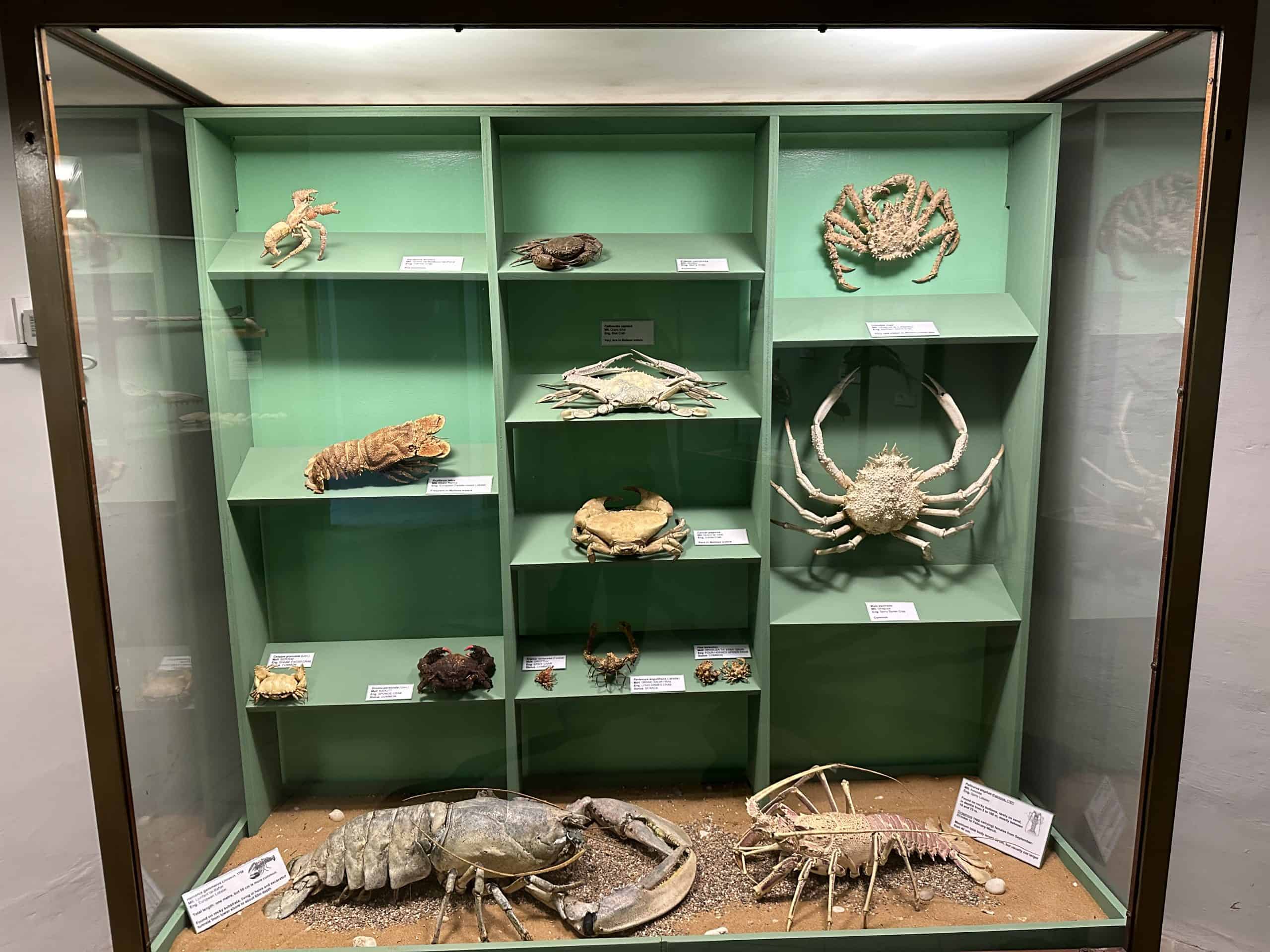
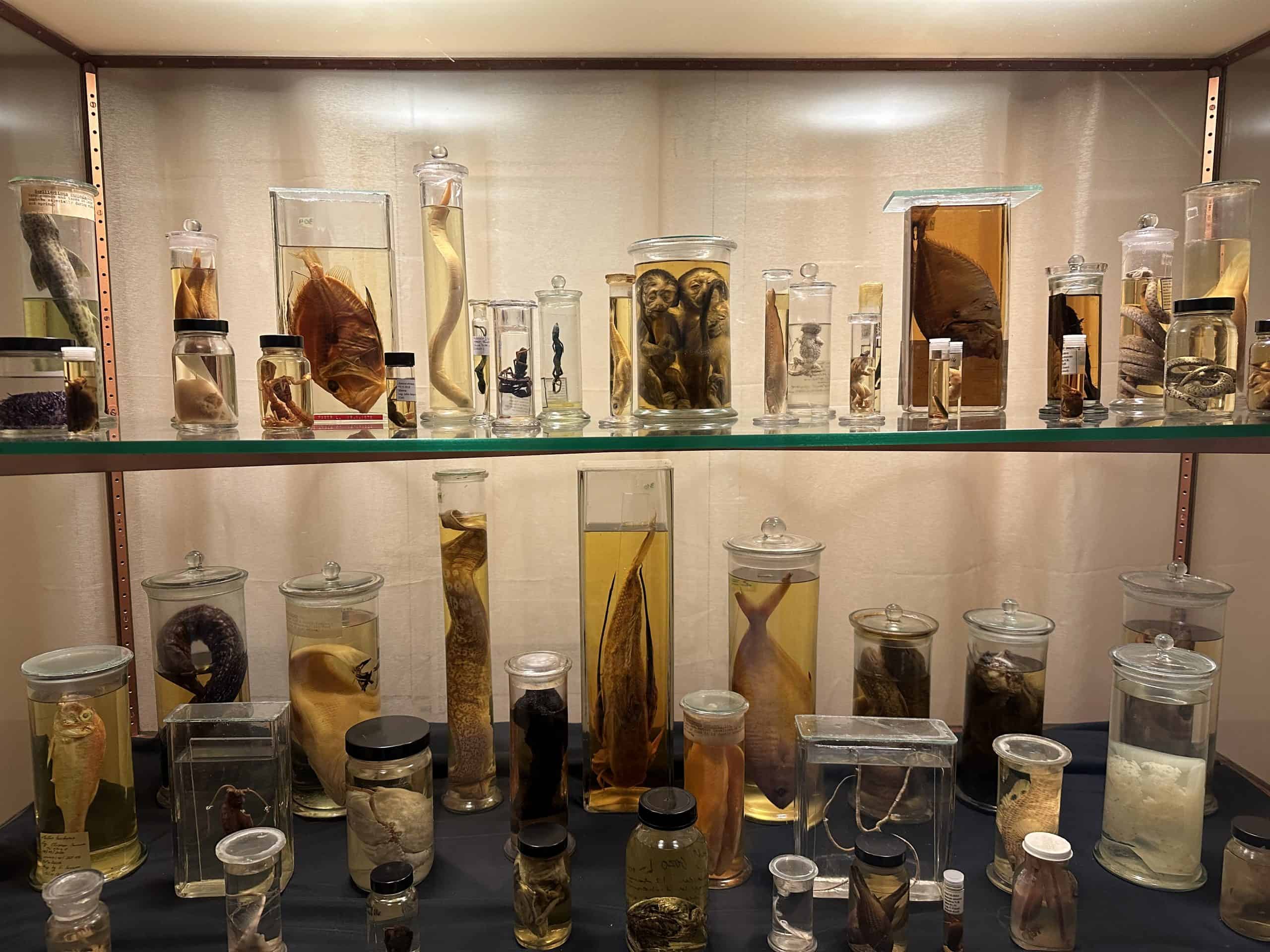
You can purchase tickets for the museum at the entrance but if you have the Heritage Malta Pass, you can enter for free.
Don’t Have Time To Read This Right Now? Pin It For Later:
Check Out The Streets (and don’t miss the door handles!)
Unlike the long, straight streets of Valletta that form a grid to connect the city, the streets of ancient Mdina are short and narrow with few long stretches. This contributes to the mystery of the city as you never know what to expect as you round the next corner.


As we walked around the town, our eyes kept being drawn to the colourful wooden balconies that are unique to Malta. The bright reds and blues and greens of the balconies pop out of the subdued tones of the buildings and gives the place an upbeat positive vibe.
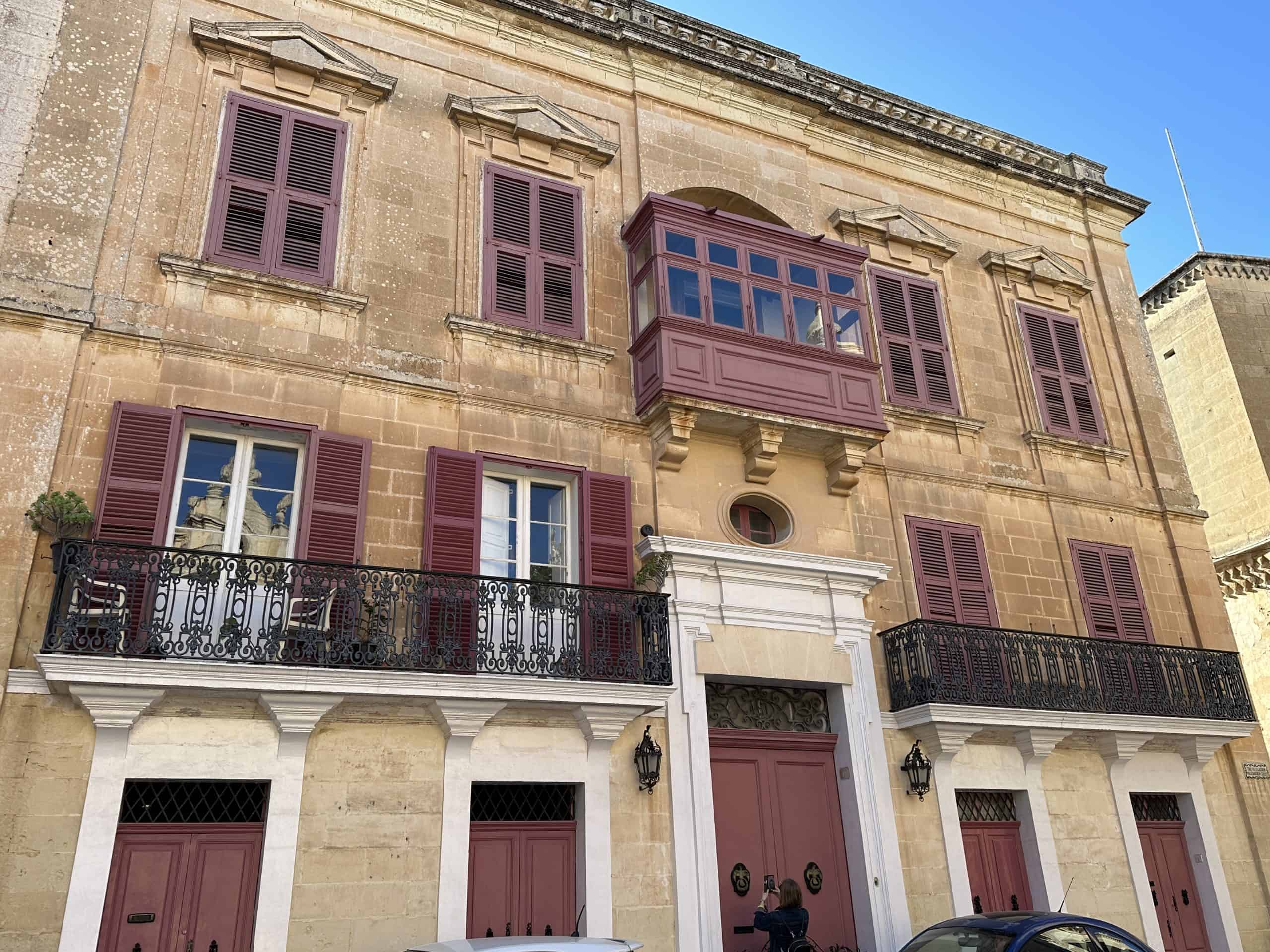
The light rosey-gold hue of the understated exterior limestone palazzos is contrasted by the elaborate baroque doorways and decorative knockers that adorn the entrances. We were intrigued by the ornate designs and extravagant detail that makes each unique door handle a work of art.
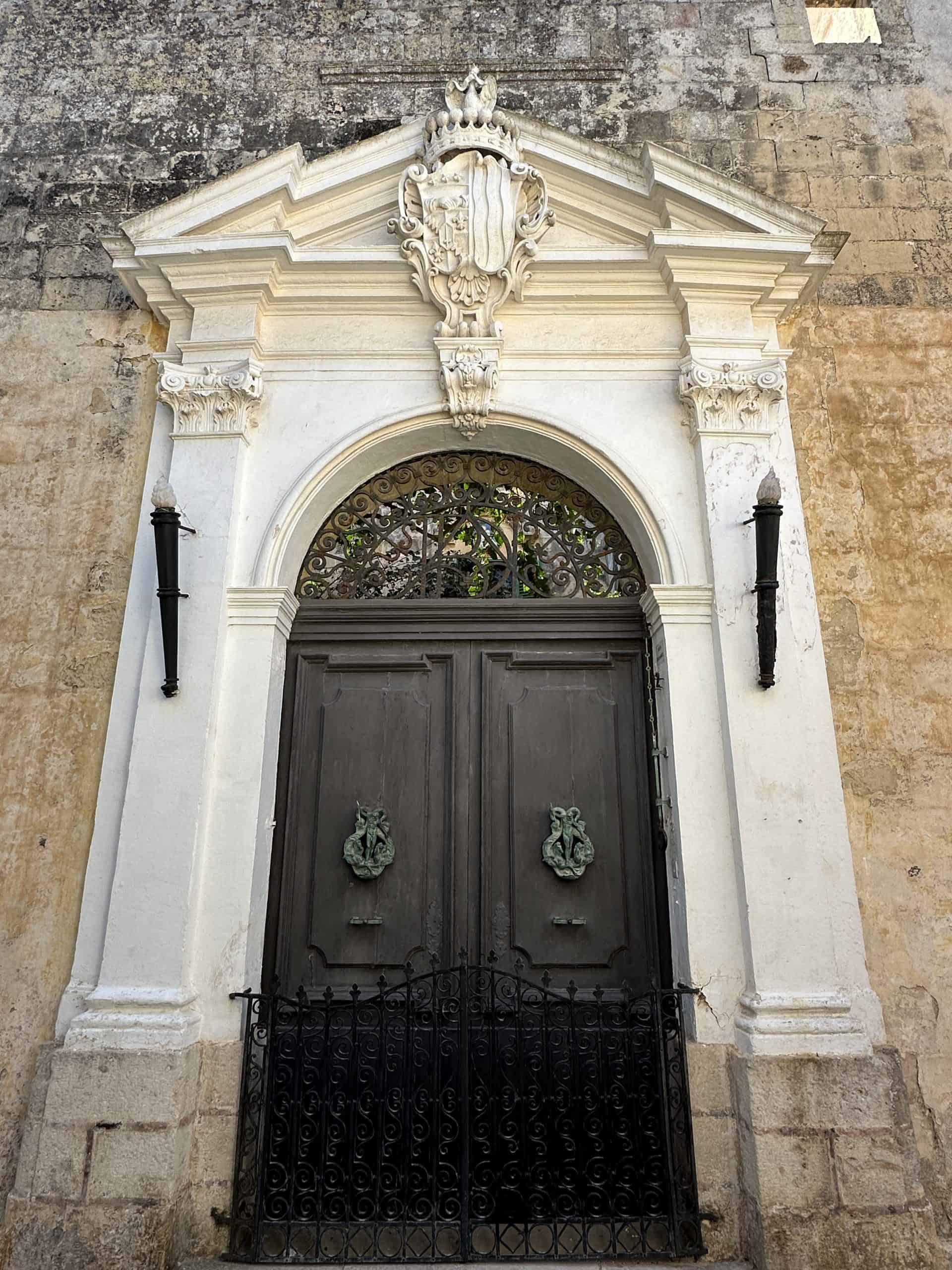
The gorgeous door knockers were not just an indication of the home owner’s wealth and prestige but also served a more practical albeit sombre purpose. Many of the door handles include large iron or brass rings. It is said that these were sometimes used by the wealthy homeowners to tie their slaves outside the household.


Wandering the charming streets of Mdina was, for us, a very rewarding experience. We imagined what is was like to live in this medieval city centuries ago and we enjoyed the artistic elements of the Baroque architecture style on the houses that border these cozy alleyways.
Discover St Paul’s Cathedral
Undoubtedly one of Mdina’s best things to do is to visit to St. Paul’s Cathedral. The austere and imposing exterior of the church is in sharp contrast to the elaborately adorned interior with its colourful frescoes, tiled marble floors, and detailed statuary.
The existing church dates back to 1702 and was built after the original cathedral was badly damaged by the earthquake of 1693. The earlier Norman church was built on this site in the early 13th century and the first reference to a cathedral in Malta dates back to 1299.

When looking at the church from the outside, the large facade is highlighted by two bell towers, each adorned with the traditional Maltese clock. Over the main entrance are carved 3 shields representing the coat of arms of the City of Mdina, the presiding bishop when the cathedral was built and Ramon Perellos y Roccaful, who was Grand Master at the time.
The church is capped by the Baroque domed cupola that was designed by Lorenzo Gafa and completed in 1705. This is one of the most impressive domes in Malta.

But the real beauty of the Cathedral is experienced when you walk into the main nave of the building. Here you are greeted with an explosion of colour from the glorious frescoes on the ceilings to the elaborate paintings on the walls and the stunning and eclectic tomb tiles of the marble floor.

All of this is highlighted by fabulous red marble columns and the gold and white trim that frames each elegant section.

The Cathedral is dedicated to the Conversion of St. Paul who founded the church in Malta after he was shipwrecked here in 60 AD. And much of the artistry inside the church depicts those events.
What was most interesting for us were the number and variety of tombs and tombstones that cover the floors and are seen along some of the walls. Knights and noblemen sought to be buried within the halls of the consecrated building.

Walking through the church and visiting the adjoining chapels is an immersion into Medieval and Renaissance art and sculpture. It is quite a cultural treat!
Visit Mdina Cathedral Museum
If you want to learn more about St. Paul’s Cathedral, and see some of the artifacts from the original Norman church, then just around the corner you will find another of our best things to do in Mdina – visit the Mdina Cathedral Museum.

This museum is housed in a (yes, you guessed it!) Baroque building dating back to the early 1700’s that was originally a seminary. The building was inaugurated as a museum in 1969 and houses artifacts dating back to the early 1300’s.

While many of the artifacts that are on display here were part of the Cathedral and represent its historic past, there are also private collections of art and objects of Maltese antiquity.

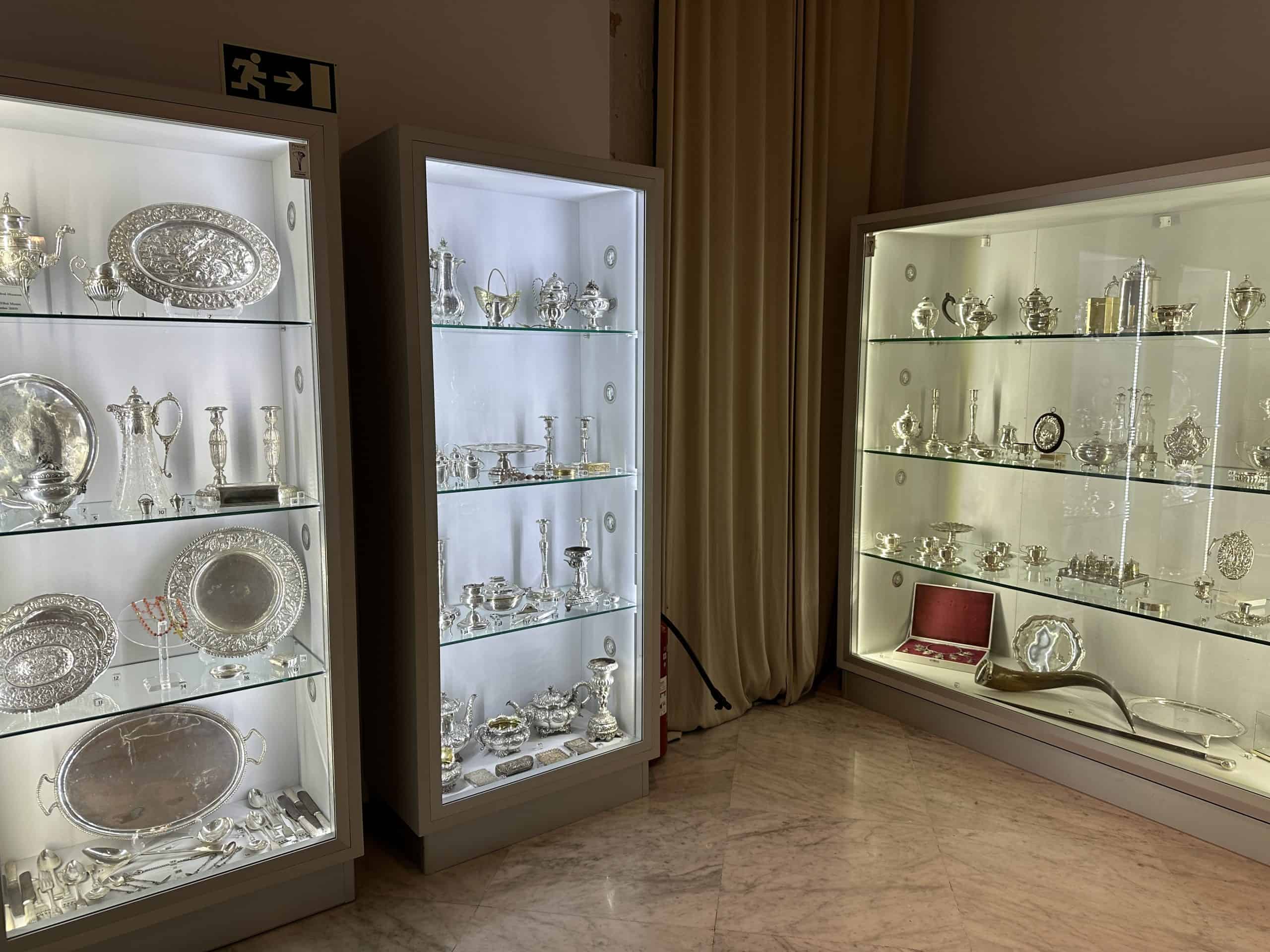
The museum is not just dedicated to religious art objects. There are many secular displays here as well. One of the featured collections is from Albrecht Dürer, a 15th century German painter, which has over 80 of his original engravings and wood carvings.
There is a paintings gallery on the first floor which features rare works of art ranging from the 14th to 19th centuries.
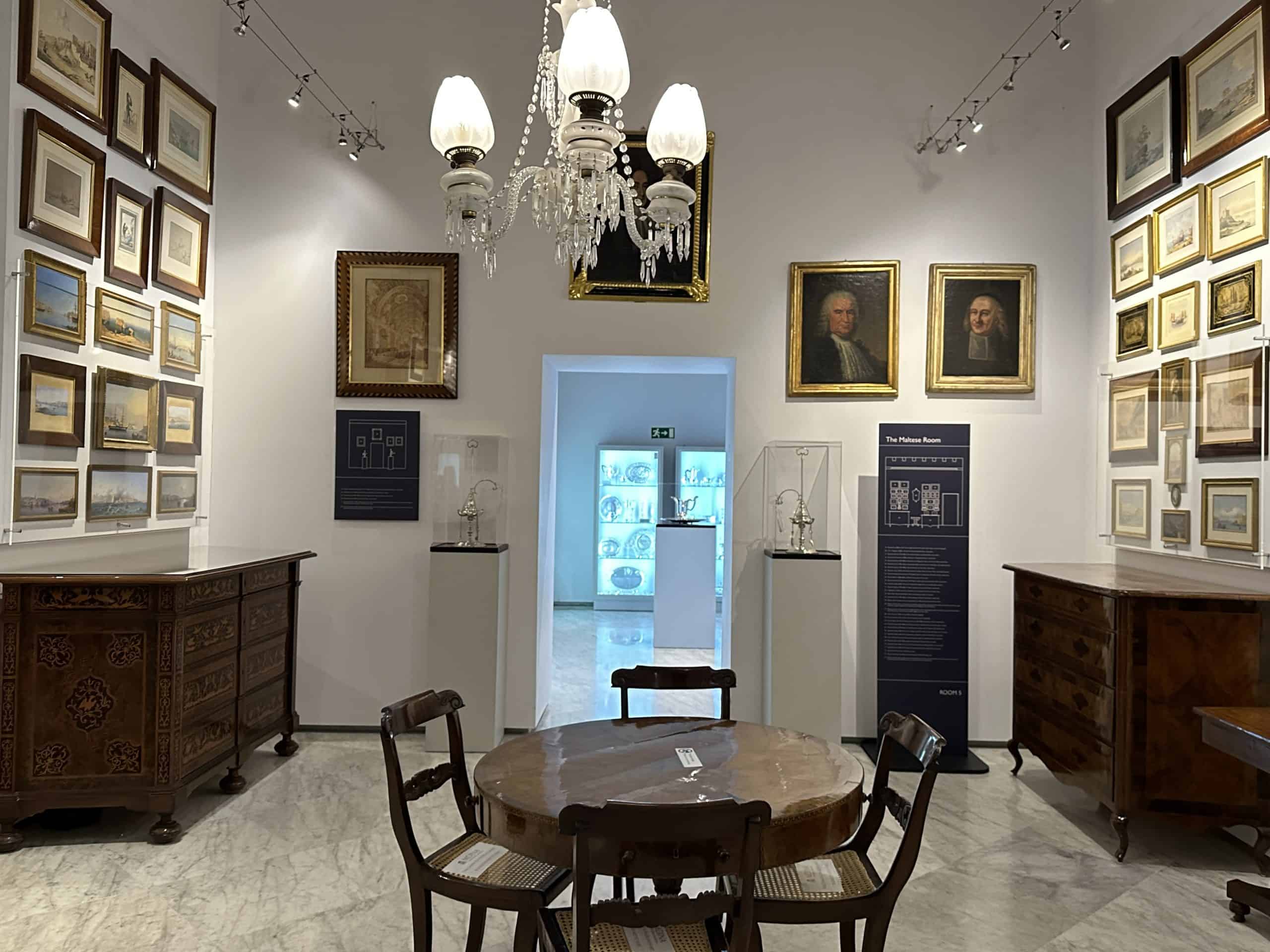
If you are interested in art and history, then this is certainly a worthwhile stop on your visit to Malta.
✅ You can go ahead and purchase your combination ticket for the St Paul’s Cathedral and Museum so you don’t have to wait in any lines.
Admire Church Of The Annunciation Of Our Lady
Just a short walk from St. Paul’s square and you find yourself standing in front of another majestic 17th century Baroque building that is the Church of the Annunciation of our Lady, also known as the Carmelite Church.

This priory Church is actually a few decades older than St. Paul’s Cathedral, dating back to the 1670’s. It wasn’t damaged during the 1693 earthquake that destroyed a lot of the buildings in Malta, including the original St. Paul’s Cathedral. In fact, the Cathedral chapter was moved to the Annunciation of our Lady until the new cathedral was build.

Like many of the Baroque buildings in Mdina, the splendour of this church is experienced when you walk through its doors. The rich, bright colours of the interior are enhanced by the high ceiling and natural light emanating from the painted dome.
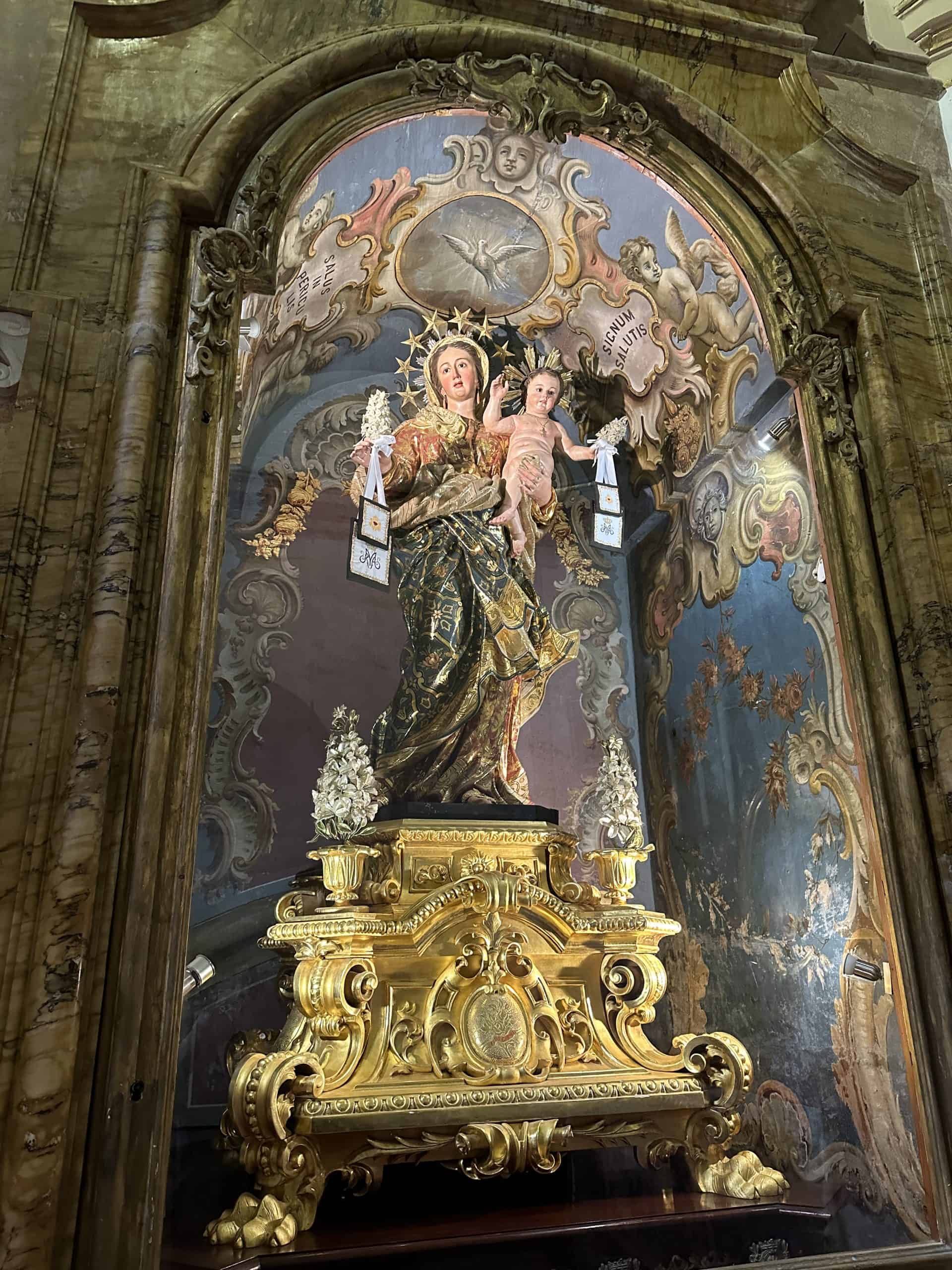
You can’t help but awe at the wonderful blend of rose, blues and gold tones that fill the interior of the Church. We particularly admired the patterned marble tile floors and red marble columns with intricate coloured designs.
Anyone fond of medieval architecture and art will not want to miss this site in Mdina.
Get The Best View From Bastion Square
No Visit to Mdina would be complete without a stop at Bastion Square to take in the wonderful views of the island of Malta. Bastion Square is located at the back of the city walls of Mdina and at the city’s highest point.
Standing on the ramparts and looking out from the walled city of Mdina, you have one of the best views on the whole island of Malta. In the distance you look out to the cities of Sliema and Valletta, and behind them the blue Mediterranean.

We were amazed at just how far you can see from this vantage point. The typically clear blue skies of Malta provided a wonderful backdrop to the countryside below.
Step Back In Time At Palazzo Falson
The Palazzo Falson is a 13th century palazzo that has been converted to a historic house museum. It was purchased in 1927 by a Swede who lived here until he died n 1962.

The Palazzo contains a range of European and Mediterranean art and artefacts spanning the 15th to 16th centuries. The palazzo reminded us of Casa Rocca Piccola in Valletta which we had visited a few days before.
Insider Tip
If you are looking for a quiet spot to relax, there is a great little rooftop cafe at Palazzo Falson. The Gustav cafe has an outdoor terrace as well as some very comfortable indoor seating on sofas and lounge chairs. In fact, Denis took advantage of the free wifi and secluded area to take a scheduled call while we were in Mdina.
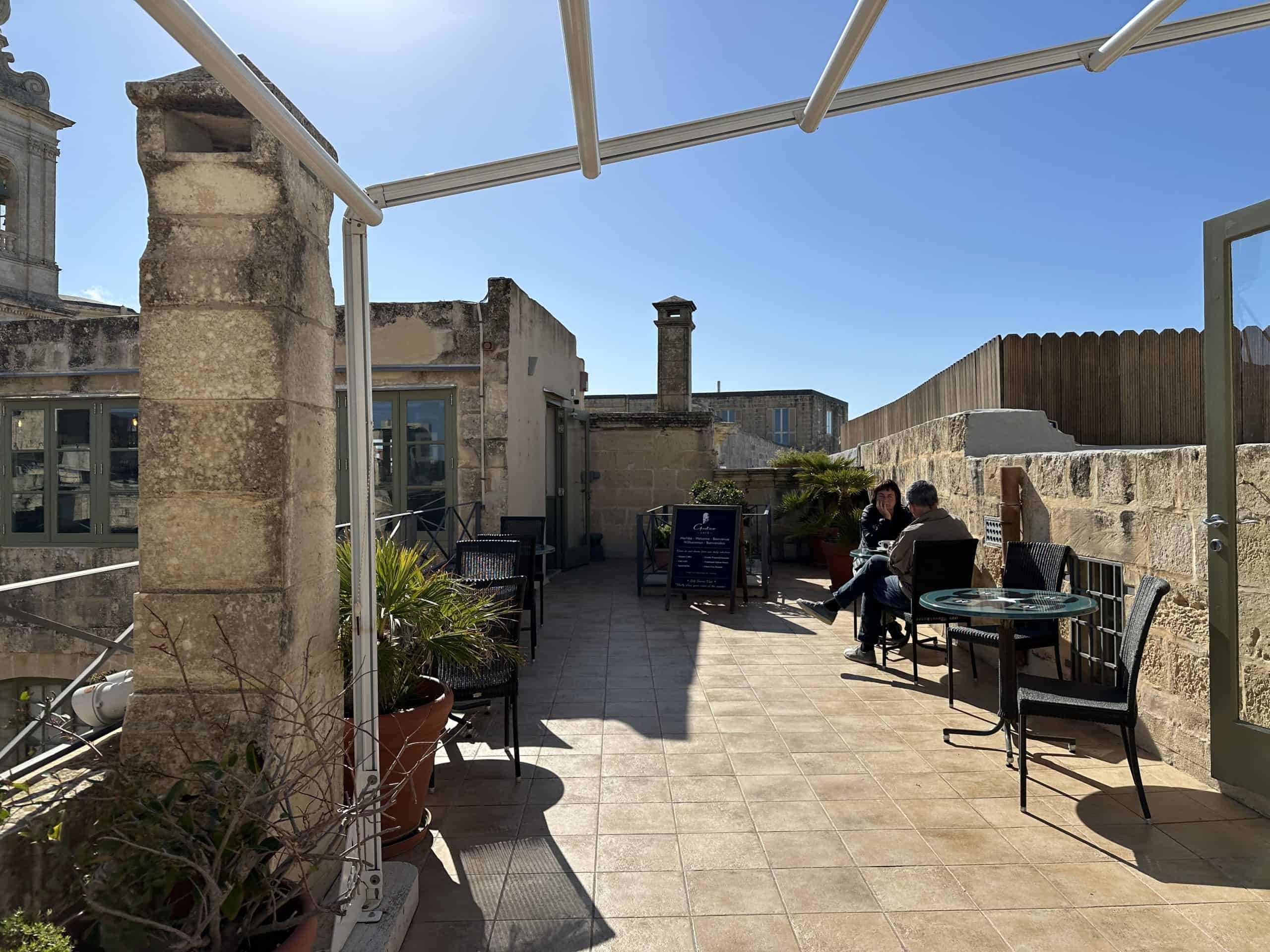
Bring Home Some Mdina Glass
Mdina Glass is a great spot to pick up a memento of your visit to this ancient capital city. Mdina Glass has been producing fine-blown glassware since the 1960s starting with smaller vases, bowls and paperweights.

Now they produce a wide variety of glassware including lanterns, animal decorations and distinctive sculptures. We bought a decorative olive oil dispenser with amber, blue and green tones that we proudly use in our home in Canada.

Walk Along Villegaignon Street
You can’t help but make a stop at one of the best things to do in Mdina since Villegaignon is the city’s Main Street. It is along this corridor that you will get to admire many of the Baroque buildings, iconic balconies and ornate doorways that Mdina is renowned for.

You will also find some discreet shops and a selection of restaurants as you meander along this main throughway. But take your time. The street isn’t very long and you will find some nice surprises as you study the architecture all along the street.
FAQs
Is Mdina Malta Worth Visiting?
Despite its diminutive size and tiny population, Mdina is well worth visiting. In fact, for us, Mdina was a top highlight of our trip to Malta. There is just so much wonderful architecture and everything is so well preserved.
We also found it a nice break from the far more bustling cities of Sliema and Valletta.
How Much Time To Spend In Mdina Malta?
How long you spend in Mdina really depends on what you want to do. The city is very tiny being less than 1 square kilometre. It is very easy to walk – in fact, other than residents, there is no driving in Mdina.
If you want to be thorough you can spend a full day and see everything there is in Mdina including visiting all the museums and churches and having lunch and dinner here.
If you are on a tight schedule and want to do a day trip to the area, you can walk through the major sites of Mdina in half a day and spend the other half day in Rabat.
Do You Have To Be Silent In Mdina?
Mdina is often referred to as “the Silent City”. While there is no signage that enforces silence in the city, there is an underlying expectation that this is a quiet and serene place.
It is important to note that there are 300 people who are full time residents of the city, and out of respect to them and their neighbourhood it is best to avoid loud and rambunctious behaviour. The city is naturally more silent than Valletta because it is much less crowded.
What Is Special About Mdina?
Mdina was the original ancient capital city of Malta and is the oldest city in the country. It is one of the most well preserved medieval cities in all of Europe and is the birthplace of Christianity in Malta, having been the home of St. Paul for 3 months in 60 AD.
Mdina Restaurants
Fontanella This is a well known restaurant located in Bastion Square. It has the advantage of overlooking the city wall with great views of Malta from the upper terrace. We were told that this is a great spot to get a wonderful cake. We ended our day in Mdina on the upper terrace with a glass of rosé.
Palazzo Costanzo – now restaurant (Coogi’s Pizzeria and Bistro) Palazzo Costanzo, like Palazzo Falson, is a palace that was once the home to a European nobleman. The palace was built in 1666 by Thomas Costanza who was from Sicily. For wonderful pizza in a unique location, be sure to check out this spot in the centre of Mdina.

The Final Word…Best Things To Do In Mdina Malta
For us, Mdina was one the places that we most wanted to see when we came to Malta. We were not disappointed.
If you want to get a glimpse of the life and history of Medieval Malta, then there is no better place to do it than in Mdina. It is a a serene, authentic experience that will provide the perfect balance of Maltese history and culture.
Put Mdina on your bucket list!
